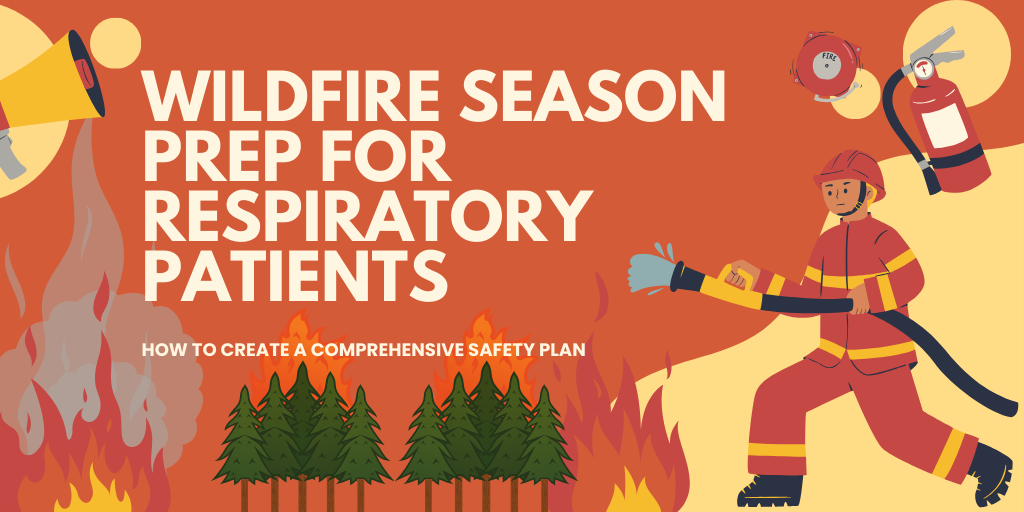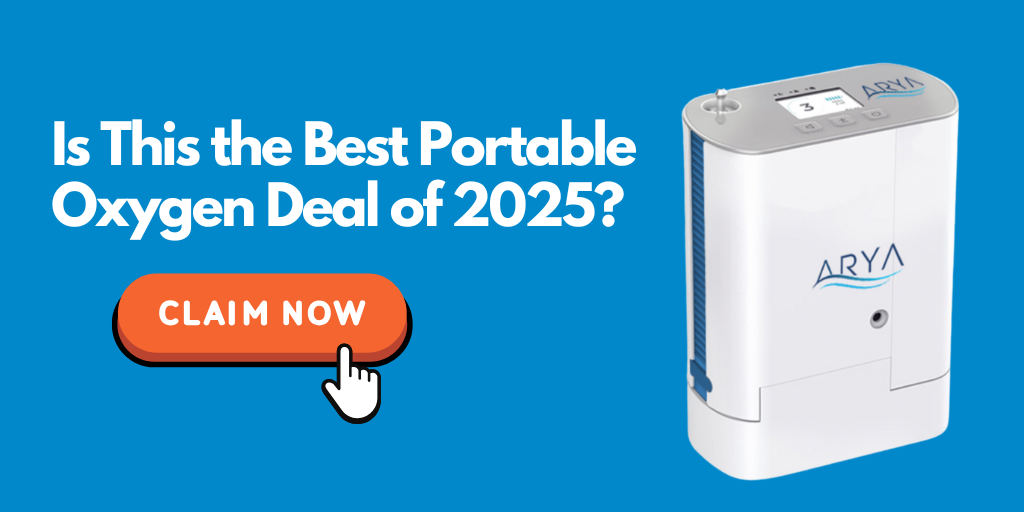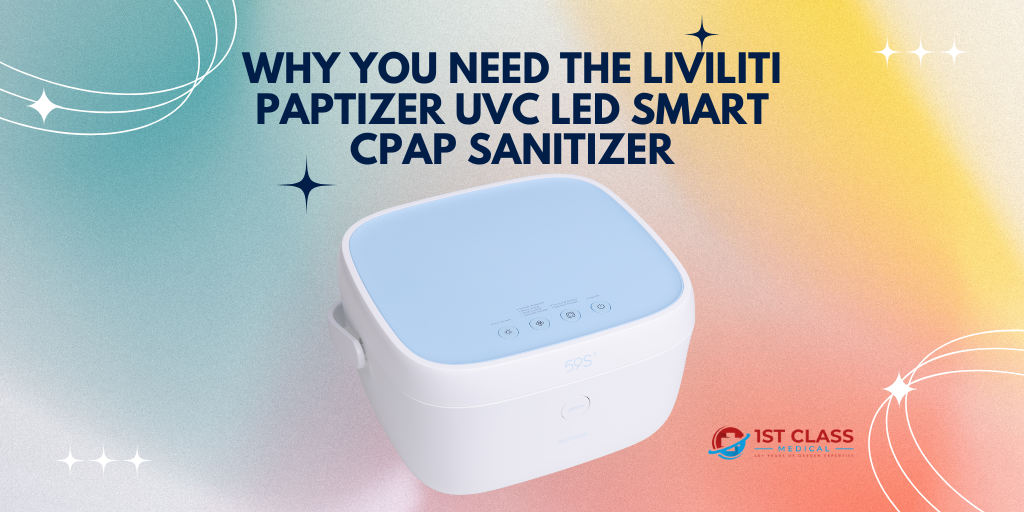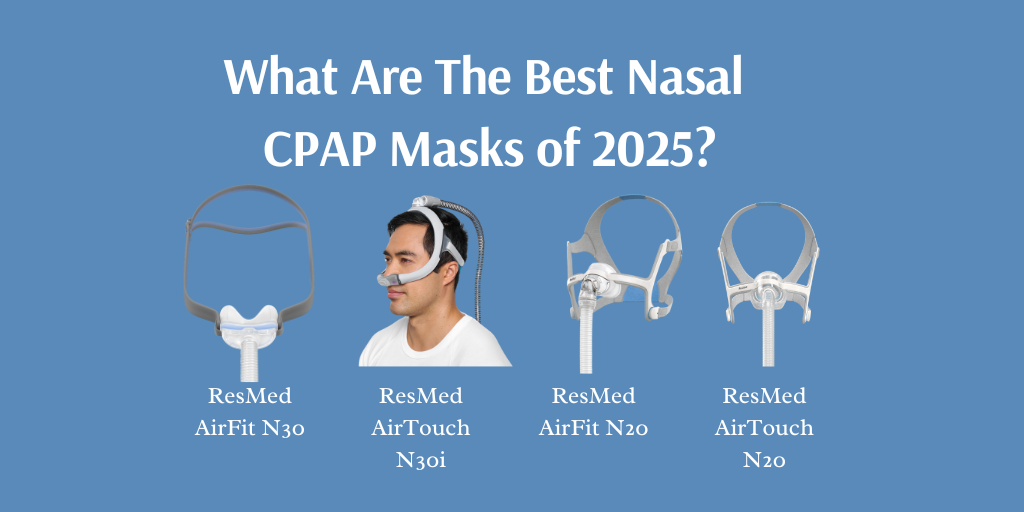
Are you planning a vacation or maybe a trip to visit friends or family members?
Well if you are diagnosed with COPD, today we will be discussing the must know travel tips!
Traveling with a respiratory condition like COPD, asthma, or cystic fibrosis can feel daunting and even stressful when you start thinking about everything that could go wrong or that you will have to deal with leading up to your trip and even during your travels.
Traveling alone can be stressful enough, but that's increased with COPD or other respiratory conditions.
But we're here to simplify the process and dare I say make it so you actually enjoy your upcoming trip!
You know having concerns about equipment, air quality, and the unexpected may make you hesitant to take that trip.
But with proper preparation, which you will be equipped with after reading this, safe and enjoyable travel is absolutely possible!
This blog will provide you with practical travel tips with COPD to help you navigate every stage of your journey—from packing the right equipment to managing air quality and finding accessible activities.
Let’s dive into how you can travel with confidence and comfort with chronic obstructive pulmonary disease.
Getting Prepared to Travel
Before you can sit back and relax while enjoying your upcoming trip, you need to ensure you are prepared leading up to your trip.
Proper planning and preparation are the foundation of a successful trip but it's even more crucial when you're diagnosed with progressive respiratory disease such as COPD.
Taking these steps before you leave for your trip ensures you’ll be ready for anything!
So before you leave, make sure you've completed the following preparations.
Talk to Your Doctor
- Speak With Your Doctor For Travel Approval: Before you leave for your trip or even finish planning your trip. You need to make sure to speak to your healthcare provider before traveling, especially if plan on flying or heading to a high-altitude destination. Changes in pressure and oxygen levels can impact breathing, so your doctor can advise how to manage these and the necessary adjustments to your flow rate if needed.
- Refill Your Prescriptions: Before you go into full vacation mode, make sure you have refilled all of your needed prescriptions to ensure they last you the entire trip, plus consider bring a few extra days in case of delays as this is something you'd rather be safe than sorry. You should also consider keeping your prescriptions in your travel bag just in case you need refills while away.
- Request a Travel Letter: You should ask your doctor for a letter explaining your condition, medications, and the need for medical equipment. This can smooth interactions with security and airline employees. You should also bring your medical oxygen prescription if you'll be traveling by airplane to show you're prescribed oxygen and the portable oxygen concentrator you're using is FAA approved.
Choose Travel-Friendly Medical Equipment
- Portable Oxygen Concentrators: If you use oxygen, a POC or portable oxygen concentrator is your best travel companion, it's not even on the same planet when compared to cumbersome oxygen tanks. These compact, FAA-approved devices make navigating airports and long journeys easier, while keeping you properly saturated. If you are prescribed medical oxygen, you won't be able to fly using an oxygen tank but you can with a portable oxygen machine!
- Medication Storage: Will you be traveling with an inhaler or nebulizer? You should store these temperature-sensitive items like inhalers or nebulizer medications in an insulated bag to protect from exposure to intense cold or heat. If you are putting your medication inside of a day pill organizer, just make sure you have your medication prescriptions available in your carry-on just in case. As this helps to provide clarity at security checkpoints and to minimize any delays.
Packing Essentials for COPD Patients
Alright now that you know how to get yourself prepared for an upcoming trip. We will now discuss why packing the right supplies is critical.
We will be covering some of the most important essentials but make sure anything else you need while away you pack.
If it helps, consider creating a packing list that way you can pack it and check it off the list to help prevent leaving anything you need behind!
A well-prepared travel bag ensures you have everything you need at your fingertips to handle any occurrence that arises.
Medical Supplies Checklist
- Oxygen Supplies: Are you prescribed medical oxygen? Make sure to bring extra cannulas, tubing, and batteries for your portable oxygen concentrator. A DC power supply, aka your car charger can be a lifesaver if your equipment runs low on power when you're away from a standard wall outlet. If you have an external battery charger, you should pack that as well. Please keep in mind, when flying with a portable oxygen concentrator the FAA requires you to have 150% of flight time in battery life. This means if the flight is 2 hours, you need at least 3 hours of battery life.
- Medications: Pack all necessary medications, including your daily prescriptions, rescue inhaler, and nebulizer if needed. Again, please consider packing extra medications just in case there's any delays on your travels back home. If you believe there's a chance you may need it during your travels, it's best to bring it along as a preventative measure.
- Emergency Tools: Ensure your oxygen levels are exactly where they should be by carrying a pulse oximeter to monitor oxygen levels. Additionally, you should bring a printed copy of your medical history, doctor’s contact information, and a copy of your oxygen prescription. This is one of those things where it doesn't hurt to be overprepared!
Comfort Items To Consider Bringing
In case you haven't done it before since being diagnosed, traveling with COPD can be tiring, especially during long flights, road trips, or during those unexpected and often extended times of waiting around.
This is why packing a few key comfort items can help you feel more at ease, reduce stress, and even manage breathlessness.
Here are some essential items to consider to enhance your overall comfort as you're on the go:
- Lightweight Travel Blanket: Whether you're driving or flying, you may want to pack a lightweight travel blanket. Airplane cabins, cars, and even hotel rooms can sometimes feel chilly during your travels. This may cause you discomfort or make your muscles tense up. A lightweight blanket keeps you warm without adding bulk to your carry-on.
- Neck Pillow: Helps you rest more comfortably during travel, these are especially helpful when you're expecting to be sitting up for long periods of time. Proper neck support helps you relax and reduces strain on your shoulders and chest. Plus, you'll be able to rest more comfortably while preventing tension that could worsen breathing problems.
- Personal Fan: Nobody enjoys feeling stuffy or hot, and this is even worse when you have COPD as this can worsen your breathlessness. Consider grabbing a small, battery-operated fan can keep you cool and reduce feelings of breathlessness whenever you start to feel stuffy either during your flight, when entering crowded spaces or to combat that warm climate you may be traveling to.
- Compression Socks: When traveling this often results in sitting for extended periods, but this can affect your blood circulation especially in your legs. Improve your blood flow while traveling by using compression socks, which also help reduce swelling and discomfort that could worsen breathing symptoms.
Managing Air Quality and Environmental Triggers
You should be well aware of the impact air quality can have on your regular day to day life, and when traveling that's certainly no different and in fact you may need to be more aware of this as your travel depending on where you're going.
Air quality can significantly impact your respiratory health, so it’s important to plan for it.
Research Air Quality at Your Destination
- Use apps like AirNow, BreezoMeter, or Plume Labs to check real-time air quality. If air quality isn't the best, you should consider avoiding going outside to prevent the potential flare-ups of any of your COPD symptoms, especially when it comes to your shortness of breath.
- Plan outdoor activities when the air is cleaner, typically in the early morning or late evening. Avoid going out during high-pollution or high-pollen times.
Avoid Environmental Triggers
Being proactive about avoiding your COPD triggers while traveling can help you stay comfortable and healthy.
Here’s how to manage some of the most common environmental challenges:
- Pollution: Stay indoors when pollution levels are high, please remember this also includes vehicle emissions, industrial smoke. Many hotels have air-conditioned lounges or indoor activities that can keep you comfortable and entertained despite not being able to go outside. You could also enjoy indoor attractions like museums, aquariums, or air-conditioned shopping centers where the air is filtered and cleaner.
- Allergens: If you’re visiting areas with high pollen or dust levels, carry antihistamines or nasal sprays to minimize symptoms. Planning on traveling to a new destination? Check the local allergy season before you visit to be prepared. For example, springtime may bring high pollen counts in some regions, while desert areas may have dust storms. Travel prepared by packing antihistamines or decongestants to manage your allergy symptoms.
Hotel & Accommodation Tips
Choosing the right hotel and making special requests ahead of time can make your stay more comfortable and reduce exposure to potential respiratory triggers.
COPD patients often need accommodations that minimize allergens, offer easy access, and allow for the use of medical equipment.
- Request a non-smoking room to avoid lingering smoke or odors.
- Ask the hotel to accommodate special needs, such as access to outlets for your oxygen concentrator or ensuring your room is near an elevator. Ideally you should see if they have a ground floor room available for quick access.
- Opt for rooms with hard flooring instead of carpets, which can trap dust and allergens.
Navigating Airports and Flights
Traveling through airports and taking flights can be challenging alone, but even more so when you are diagnosed with COPD or another respiratory disease, but with proper planning, you can navigate these environments smoothly and safely.
Here’s a few tips to help you manage the unique obstacles you might encounter during your travels!
TSA & Security Checkpoints
- Notify TSA agents about your medical equipment when you arrive at security. portable oxygen concentrators, nebulizers, and medications are allowed through checkpoints, but it’s helpful to have a doctor’s note handy. When you arrive, we'd recommend informing TSA about your medical equipment as letting the agents know ahead of time helps avoid confusion or delays.
- Always keep essential medications and equipment in your carry-on bag. Checked luggage can get delayed or lost, so it’s vital to have these items within reach. Additionally, you should keep all your medication in their original labeled packaging so it's easy for airport staff to identify and prevent any potential delays this could cause.
Oxygen Use During Flights
Please do not overlook this important tip if you use supplemental oxygen! It’s important to make arrangements in advance to ensure your needs are met while flying.
- Contact Your Airline: Call ahead as many airlines require at least 48 hours’ notice to discuss requirements and ensure they have your details on file. And before you head to the airport, please ensure the portable oxygen concentrator you'll be traveling with is FAA approved for in-flight use.
- Battery Planning: FAA regulations require enough battery power for 150% of the listed flight time, so bring spare batteries to account for delays. This means a 2 hour flight would require you to have a minimum of 3 hours of battery life for your portable oxygen concentrator. You should pack an additional battery just in case.
Tips for Managing Long Flights
- Stay Hydrated: Airplane cabin air is exceptionally dry, and when you have COPD that can result in the thickening of the mucus in your airways thicker making it more difficult to clear. So as you're on-board, and even after ensure you are drinking plenty of water. Avoid things like caffeinated or alcoholic beverages which can further dehydrate.
- Use Compression Socks: Although these were mentioned before, compression socks are definitely something you want to pack when facing a long flight simply for the circulation and prevention of swelling benefits they provide.
- Deep Breathing Exercises: Using breathing techniques like pursed-lip breathing or diaphragmatic breathing help you stay relaxed and prevent breathlessness, these are especially helpful during the even of a shortness of breath flare-up.
Planning Accessible Transportation and Activities
Making transportation to and from your plans, in addition to the type of activities planned, you need to make sure they're both accessible for you while traveling.
Transportation Tips
- Use ride-share apps like Uber or Lyft, which often include accessibility options. When you need to book your ride in one of these apps for example, you can select “Accessibility” or use the “Preferences” tab to indicate your needs.
- Now if you are renting a car, request a vehicle with extra storage space for equipment. If mobility is an issue, ask the rental car company about reserving a vehicle with power-adjustable seats or easier entry points.
Accessible Destinations
- Look for respiratory-friendly destinations, such as locations at sea level or areas known for clean air.
- Research attractions like museums, parks, or zoos that offer wheelchair access and shaded rest areas.
Pace Yourself
- Plan your days with rest breaks in mind to conserve energy, and whenever you start to feel short of energy or you feel a COPD symptom like shortness of breath begin to increase, please give yourself a break and give your body some time to relax and recover.
- Avoid overexertion, especially in hot or humid conditions, and listen to your body’s signals.
Staying Safe While Traveling
Being prepared for unexpected situations keeps you safe and gives you peace of mind. As you travel, changes in altitude, activity levels, or even stress can impact your breathing, so regular monitoring is essential.
Monitor Your Symptoms
- Use a pulse oximeter regularly to check your oxygen levels.
- Be mindful of warning signs like increased shortness of breath, chest tightness, or fatigue.
Know Emergency Resources
- Before your trip, research nearby hospitals, urgent care centers, and pharmacies.
- Carry a card with emergency contacts, including your doctor’s phone number and a trusted friend or family member.
Have a Backup Plan
- Always pack essential items in your carry-on, including medications, medical letters, and oxygen equipment to access quickly if or when you need them.
- Plan for possible delays by bringing extra supplies, like snacks, water, and batteries for your portable oxygen concentrator.
Final Thoughts
Traveling with a respiratory condition such as chronic obstructive pulmonary disease (COPD) might seem challenging, but with the right planning, it’s completely doable.
From packing essentials to managing air quality and planning accessible activities, you can enjoy your trip with confidence.
Start small, and remember that every journey is a step toward new experiences and memories.
Have tips you've found helpful with COPD that you'd like to share? Leave them in the comments to help others in the community.
Safe travels!







